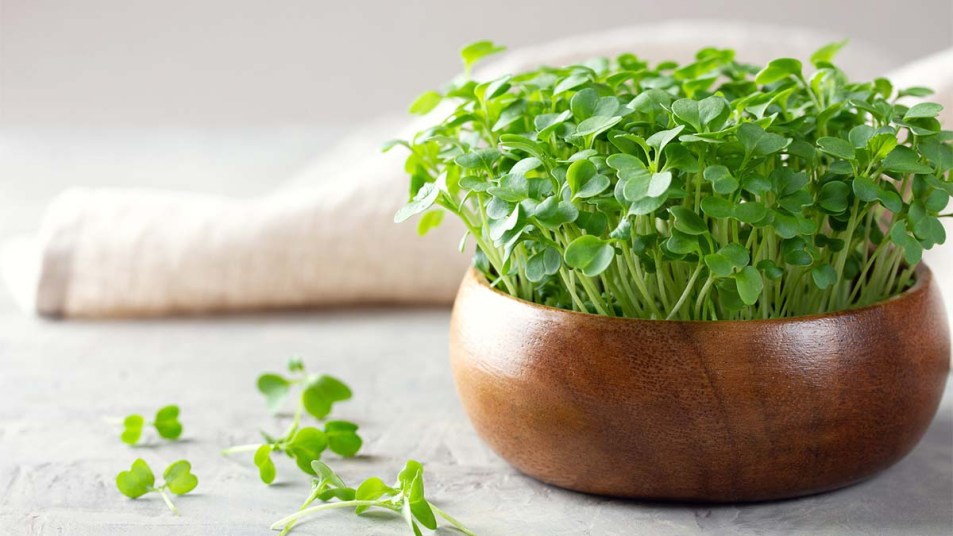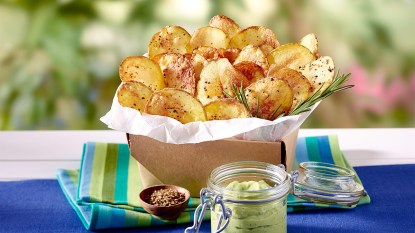Grow This Superfood Green At Home to Save Money and Pack a Nutritional Punch

My family has a gardening gene, and it started with my maternal grandfather. Now, it’s slowly rubbing off on me. I don’t have his knack for harvesting an apple tree or several yards of fruits and veggies in my backyard (at least not yet!). But for now, my green thumb is savvy enough to keep a few pots of health-boosting herbs thriving on my windowsill. Which is amazing, as new research suggests that microgreens grown on a windowsill have health benefits that closely resemble the commercial kind!
The Research on Home-Grown Microgreens
If you’re unfamiliar with microgreens, they’re young edible greens that are about one to three inches tall. There are multiple varieties of microgreens. However, a recent study published in ACS Food Science & Technology focused on broccoli and kale varieties, which are a part of the Brassica plant family.
The reason? Researchers acknowledged that the mature versions of broccoli and kale contain high amounts of vitamins, minerals, and phytochemicals (chemical compounds). Yet, not much was known about the levels of nutritional compounds in Brassica microgreens or seedlings prior to this study. Also, the authors were curious as to how environmental conditions like light, UV radiation, temperature, and humidity impact the nutritional content of Brassica crops during the harvesting process.
So, they decided to compare the levels of natural compounds — like polyphenols and glucosinolates — in broccoli and kale microgreens grown on a windowsill to the same greens grown in a commercial chamber. (For clarity, polyphenols are plant compounds that help to protect against heart disease and diabetes. Glucosinolates are compounds that give certain greens a pungent flavor, and they have anti-inflammatory and anti-cancer related properties.)
Researchers arranged some trays of newly planted kale and broccoli seeds on a windowsill in natural sunlight. They placed another set of trays in a fridge-like growth chamber with artificial sunlight and controlled temperature and humidity. Both sets of trays were under the sunlight for 12 hours a day. Then, the authors harvested the plants and looked at its phytonutrient content 10 full days after seeding.
The Fresh Findings
The findings show that the broccoli and kale microgreens were both rich polyphenols and glucosinolates, regardless of the growing process. But, the windowsill-grown varieties contained higher levels of certain plant compounds, including three kinds of flavanols that give the plants a dark color and bitter flavor. In contrast, microgreens grown in the commercial chamber had higher levels of glucosinolates than ones on the windowsill.
Despite these differences, this study suggests that homegrown broccoli and kale microgreens can come with some amazing health perks just as commercially grown ones do. Luckily, it’s simple to add microgreens to your diet — they’re perfect to toss in refreshing salads, sprinkle over comforting pasta dishes, and add to sandwiches. Plus, keeping your own stash of these microgreens means you’ll save some cash and a trip to the store (a win-win!).
You can pick up seeds to grow broccoli and kale microgreens from your local gardening supplies store or online. For some varieties that we like, try these Microgreen Broccoli Seeds (Buy from True Leaf Market, $4.63) and Kale Seeds (Buy from True Leaf Market, $4.79).
These findings give me a reason to add broccoli and kale microgreens to my windowsill plant roster, especially with sunnier days ahead. Hopefully, this will help me step up my home gardening game to be at my grandfather’s level one day!













